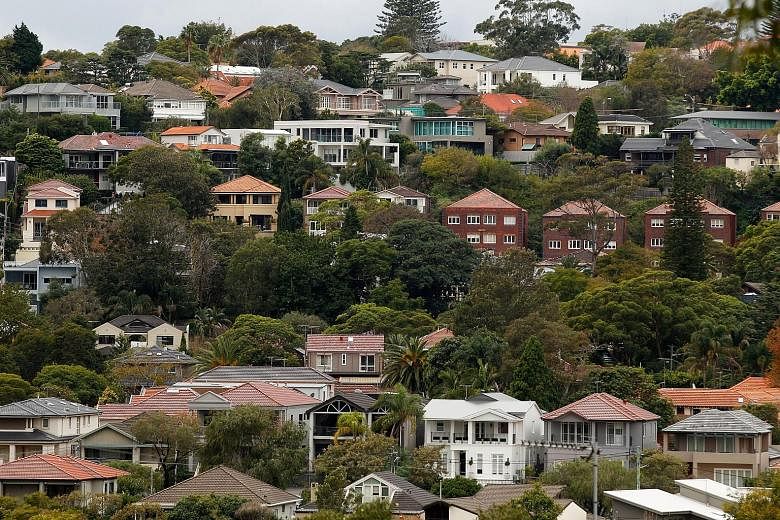Foreigners in Australia are finding it increasingly difficult to secure a home loan after major banks curbed lending to non-residents.
Australia's four big banks are Westpac, ANZ, Commonwealth Bank and NAB.
In recent weeks, banks have introduced measures such as requiring face-to-face meetings for loan applications and scaling back the loan amount to those with foreign income from 80 per cent to 70 per cent of the purchase price.
Experts believe the recent curbs are not motivated by an "anti-foreigner policy". Instead, the banks are responding to growing concerns about their high exposure to the soaring property market.
The latest move to tighten lending was by Westpac, which announced on April 26 that it will stop making home loans to non-residents, temporary visa-holders or self-employed applicants whose income comes from abroad.
"We have strengthened our policies regarding non-residents lending and foreign income, which represent a very small component of our loan book," a bank spokesman told The Straits Times.
Foreign investment in Australian property has soared in recent years. This has fuelled public concerns that foreign buyers are squeezing out local buyers and making housing unaffordable.
Government data shows that Chinese investment in Australian residential and commercial property doubled to A$24 billion (S$24 billion) last year, from A$12 billion in 2014 and just A$5 billion in 2013.
China was the biggest source of property investment, followed by the United States with A$7.1 billion, Singapore with A$3.8 billion and Malaysia with A$3.4 billion.
But the move by the banks is unlikely to have a big impact on the market or foreign investment flow.
The banks say only a small part of their housing loans involves non-residents relying on foreign-source income. Many Chinese buyers reportedly use cash and foreign-sourced funds and do not take out local loans.
Dr Harald Scheule, a finance expert from the University of Technology, Sydney, told The Straits Times the tightening of lending to foreigners appeared to be part of the banks' recent attempts to steer away from excessive exposure to the housing market.
"None of the banks has an anti- foreigner policy," he said.
More than 60 per cent of lending by Australia's big banks is to residential property buyers, one of the highest levels in the world.
The banking regulator has repeatedly warned that it will be keeping a tight watch on the lending portfolios of the major banks.
A senior executive at the Australian Prudential and Regulation Authority, Mr Charles Littrell, said the property-heavy concentration of lending in the banking sector is a "perpetual concern".
"It is a significant issue of concern... that close to two-thirds of (the big four banks') balance sheets are exposed to property," he told The Australian Financial Review early last month.
Dr Scheule said the curbs may also indicate that banks want to reduce their exposure to Asia over concerns that the economies, especially China's, "are not as solid as they may have been in the past".
The recent curbs have been criticised as an "over-reaction" by some real estate developers and property finance firms. But they are unlikely to take much heat out of the soaring property market.
Australia's central bank said in a financial stability report last month that the direct exposure of banks to Chinese investors and developers "appears to be small". But it added: "If Chinese demand were to decline significantly, that could weigh on domestic property prices and lead to losses on the banks' broader property-related exposures."
Home prices in Australia rose 7 per cent last year, with increases in Sydney and Melbourne of 9 and 10 per cent, respectively.

